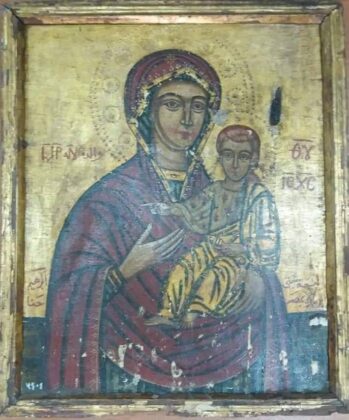Egypt: The Ministry of Tourism and Antiquities has recently shared updates and information about the special pieces to be exhibited in the country’s museum in the month of January 2023.
As part of the monthly tradition of Egyptian museums across the republic, museums chose January pieces through a public vote on their Facebook social media pages.
As per the recent updates, the head of the museum sector at the Supreme Council for Archaeology, Professor Moomen Othman, explained that this tradition comes within the framework of museums’ role as civilized cultural institutions that work to raise tourism and archaeological awareness among all levels of society.
Furthermore, to celebrate Christmas this month, the public chose signed artefacts highlighting the occasion, which were exhibited, are the Coptic Museum, Cairo International Airport 3, Suez National Museum, Ismailia Museum, Tanta Archeology Museum, and Alexandria Museum. For my nation, the Kom Oshima museum in Fayoum,
and Malawi museum in Minya, a group of Christmas icons that depicted the birth of Jesus Christ, as well as the Virgin Mary carrying the Child Jesus and beside them St. Joseph the Al-Nagar, and also the icon of the Good News, which depicts the angel Gabriel’s annunciation to Lady Virgin Mary of Christmas. The list of the museum and artefacts to be exhibited are as follows,
Sharm El Sheikh Museum:
A colourful mural showing a magician’s visit to Lord Jesus the Infant, dating back to the 7th century A.D.
Cairo International Airport Museum 2:
An office beacon, made of silver, features an iconic image of Joseph the Carpenter holding the Lord Jesus, and two sides of the perch have a distinctive inscription of an angel blowing on trumpet as the perch is above the head of an angel with a unique sculpture and a cross above.
Museum of Islamic Art:
Features an astronomical ball of stars and stars made of copper, dating back to the Ottoman era.
Museum of Royal Jewellery:
A silver out cover photo album features a local Quran with coloured mina and Islamic motifs studded with diamonds, red sapphire and turquoise stones.
Farouk Corner Museum in Helwan:
The brass fireplace curtain features a peacock tail-shaped brass fireplace made of nine geometric shapes.
National Police Museum in the Castle:
A piece of fabric shows a drawing of a knight riding Jawad, a dark-coloured port on a light floor with an oval-shaped edge surrounded by motifs and geometric forms dating back to the Coptic era.
The Museum of Al-Minil Palace:
displays a collection of deer heads, known as pulling carriages on Christmas festivities.
Museum of Royal Vehicles:
Bronze half statue on display by Khadawi Ismail, signed by the French manufacturer.
The Jire Anderson Museum:
Features a round stamp with an engraving and a long handle used in carving holiday cakes.
Museum of Proposed Archaeology:
Late Roman era limestone grave witness shows a lady carved into a shell shape and on the sides two beautiful columns, both holding a vegetal branch, and on the sides of the head a cross.
Hill Basta Museum:
A tombstone witness from limestone displays a rectangular painting of 7 horizontal lines of jealous Coptic writing.
Museum of Hurghada:
A piece of linen and wool shows a drawing of the Virgin carrying Jesus around her by angels.
Kafr El Sheikh Museum:
Shows a chart containing the four bibles (Matthew, Mark, Luke, John)
Sohag National Museum:
One of the Anba Monastery keys displays the “White Monastery”, a large-sized key decorated with small circles and the top is inlaid with metal chips and finished with a ring for suspension.
Luxor Museum of Ancient Egyptian Art:
It shows a decorative rectangle painting, likely to have been among the motifs of a church built inside and outside the Temple of Luxor in the Christian era.
Museum of Embroidery in Luxor:
The statue of the “Alba”, made of coloured wood, shows a human-headed bird, symbolizing the deceased’s spirit.
The New Valley Museum of Archaeology:
Answers in Arabic with drawings and pictures in colours are shown and consist of 10 pages in Arabic and Coptic.








